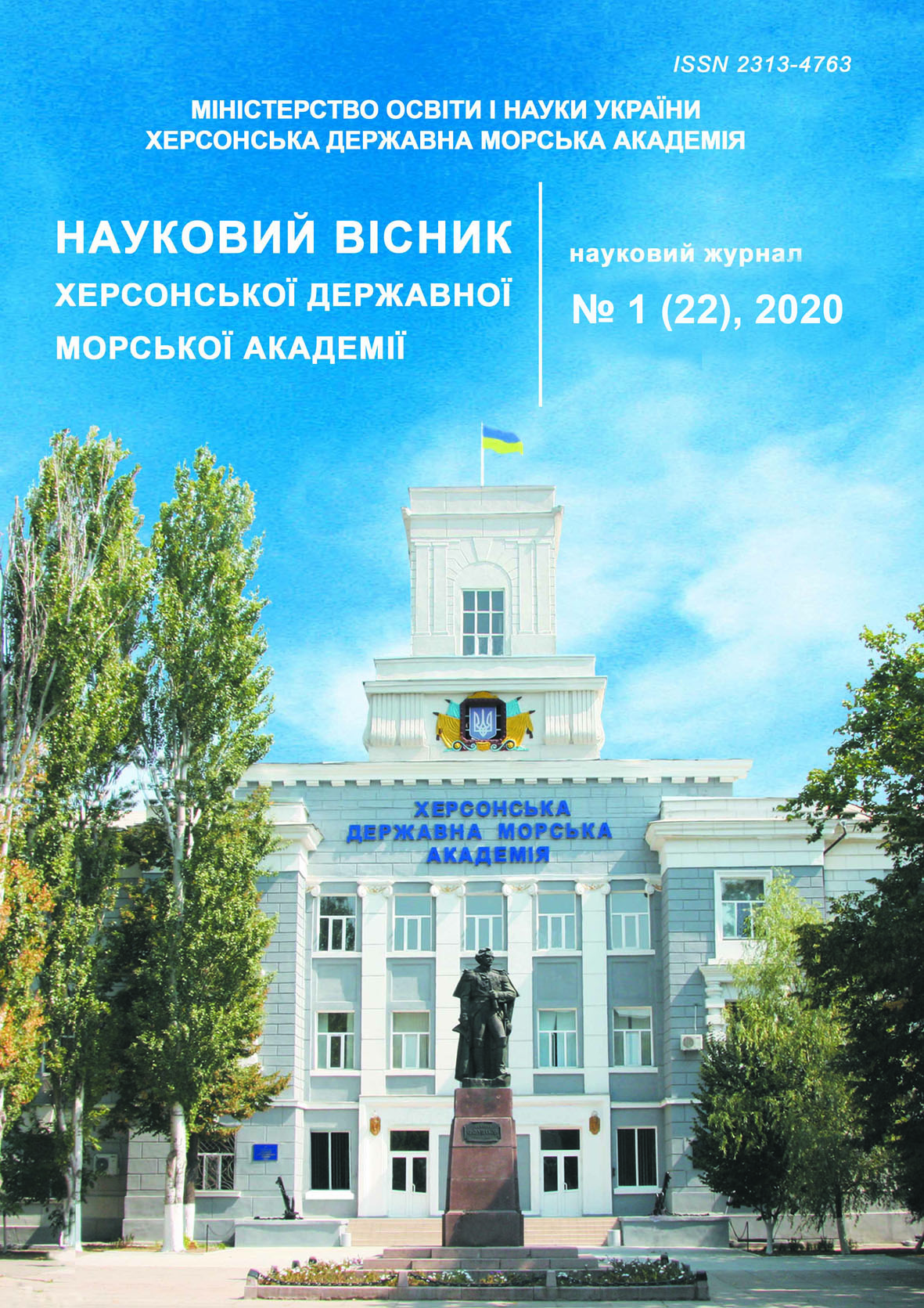THEORETICAL PREREQUISITES FOR OPERATION OF STRUCTURES WITH METAL-GLASS PROTECTIVE COATINGS ON BOARD A VESSEL IN VIBRATION ENVIRONMENT
10.33815/2313-4763.2020.1.22.175-185
Abstract
The article is devoted to looking for a solution for the scientific and technical issue of reducing vibrations on vessels. It is considered to be achieved with the application of the vibration-absorbing composite coatings. The purpose of the work is to theoretically substantiate the possibility of operation of structures with metal-glass coatings taking into consideration the vibration environment of a vessel. The formulation of the research includes the discovery of the solution for the micromechanics issue set up on the model of a two-layer plate St3 ‒ metal-glass coatings, taking into account their structural features, and experimental tensile tests. The influence of the polydisperse structure of coatings on the mechanisms of absorption of elastic-plastic waves of dynamic oscillations has been analyzed with the help of the analytical description of microdisplacement deformations. The influence of morphology and volume content of glass fillers, specifically hollow glass microspheres, powders of sodium silicate and lead-containing glass on the vibration coefficient, strength limit and yield strength has been investigated. Calculations have shown the feasibility of using metal-glass coatings in conditions of vessel vibration, which is due to the absorption of energy by glass inclusions of spherical and angular shape. It has been experimentally proven that coated plates are slightly inferior in tensile strength to samples with St3; the destruction of coatings occurs between glass inclusions. The obtained results have scientific and practical significance for the design of ship structures using composite materials and coatings.
References
2. Ivanov, N. I. (2008). Inzhenernaja akustika. Teorija i praktika bor’by s shumom. Moskva : Universitetskaja kniga, Logos.
3. L. M. Mackevich, A. M. Vishnevskiyj, A. B. Razletova at el. (2009). Faktorih, formiruyuthie sredu obitaniya pri ehkspluatacii objhektov vodnogo transporta. Kazanskiyj medicinskiyj zhurnal. Vol. 90. Issue 4. 597–600.
4. Favstov, Ju. N., Shul’ga, Ju. N., & Rahshtadt, A. G. (1980). Metallovedenie vysokodempfirujushhih splavov. Moskva : Metallurgija.
5. Lebedeva, N. Ju. (2002). Issledovanie svarivaemosti vysokodempfirujushhego margancevo-mednogo splava G80D15H3N2. Zbirnyk naukovyh prac’ UDMTU, 4(382), 72–77.
6. Bashhenko, G. A. (1999). Vlijanie legirovanija na vydelenie ohrupchivajushhih faz pri sarenii splavov sistemy Mn-Cu. MiTOM, 11, 36–39.
7. Lebedeva, N. Ju. (2002). Vlijanie termicheskoj obrabotki i temperatur nagreva na dempfirujushhie svojstva margancevo-mednyh splavov. Zbirnyk naukovyh prac’ UDMTU, 3(381), 48–52.
8. Zenjkevich A. A., Proskuryakov V. I., Egorov I. S., Thelkunov A. Yu. (2019). Uprochnenie poverkhnosti titanovogo splava VT6 v rezuljtate ehlektroplasticheskoyj deformacii. Molodoyj uchenihyj, 25 (263), 106–108.
9. Landau, L. and Livshic, E. (2007). Teorija uprugosti. Moskva: Fizmatiz.
10. Cherkasov, V. D., Jurkin, Ju. V., & Avdonin, V. I. (2012). Prognozirovanie dempfirujushhih svojstv kompozita s uchetom temperaturnoj zavisimosti svojstv polimera. Vestnik TGASU, 4, 216–225.
11. Kirpichnikov, V. Ju., Savchenko, V. V., Smol’nikov, V. Ju., & Shlemov, Ju. F. (2019). azrabotka novyh vysokojeffektivnyh sredstv vibrodempfirovanija sudovyh konstrukcij. Trudy Krylovskogo gosudarstvennogo centra, 1(387), 167-174.
12. Atroshenko, S. A., Krivosheev, S. I., & Utkin, A. A. (2002). Razrushenie sferoplastika pri staticheskih i dinamicheskih nagruzkah. Zhurnal tehnicheskoj fiziki, 72(12), 54–58.
13. Kazymyrenko, Y. (2016). The Thermomechanical Processes in metal-glass Coating of Vessel Constructions and Floating Facilities for radioactive Cargo. The advanced science jornal, 2, 38–44.
14. Kazymyrenko, Y. A., Lebedeva, N. Ju., & Karpechenko, A. A. (2013). Issledovanie dempfirujushhih svojstv jelektrodugovyh pokrytij, napolnennyh polymi stekljannymi mikrosferami. Zbirnyk naukovih prats NUK, 1(446), 56–59.
15. Kazymerenko, Y. A., Lebedeva, N. Ju., Karpechenko, A. A., & Zhdanov, A. A. (2013). Formirovanie jelektrodugovyh pokrytij s povyshennoj prochnost’ju, dempfirujushhej sposobnost’ju i kojefficientom pogloshhenija izluchenij. Naukovі notatki : mіzhvuz. zb., 1(41), 117–121.
16. Vanin, G. (1985). Mikromehanika kompozicionnyh materialov. Kiev: Naukovadumka.
17. Vol’mir, A. S. (1967). Ustojchivost’ deformiruemyh sistem. Moskva : Nauka.
18. Pirs, A. D. (2005). Kolebanija sfericheskih vkljuchenij v uprugih tverdyh tealh. Akusticheskij zhurnal, 51(1), 9–22.
19. Kazymyrenko, Y. (2016). The Effective Mechanical Properties of Metal-Glass Materials. The advanced science journal, 1, 90–94.
20. Saltykov, S. A. (1976). Stereometricheskaja metallografija. Moskva : Metallurgija.
21. Valjantis, K. I., Popov, Ju. N., Shljapochnikov, S. A. (2012). Raschet kojefficienta poter’ metallicheskoj plastiny, oblicovannoj vibropogloshhajushhim pokrytiem iz vysokonapolnennogo poliuretana. Sessija Nauchnogo soveta RAN po akustike i XXVII sessija Rossijskogo akusticheskogo obshhestva.
22. Pisarenko, G. S., Jakovlev, A. P., & Matveev, V. V. (1971). Vibropogloshhajushhie svojstva konstrukcionnyh materialov. Kyev : Naukova dumka.






